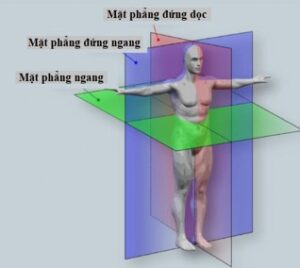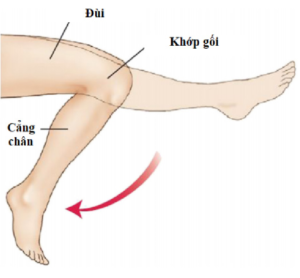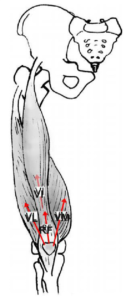Table of contents [hide]
1. OVERVIEW
Kinetic body (English: Kinesiology, derived from Ancient Greek (kínēsis) ''motion'' and -λογία -logía ''study of'') is the scientific study of body movement. human. Kinetics deals with the principles of physiology, anatomy, biomechanics, pathology, neuropsychiatry, and motor mechanisms. Applications of kinematics to human health include biomechanics and orthopedics; strength and adaptability; sports psychology; motion conditioning; skill learning and motor learning; methods Rehabilitation, such as physical therapy and occupational disease treatment; physiology of sport and exercise. Studies of human and animal movement include measurements from motion tracking systems, electrophysiology of muscle and brain activity, various methods for monitoring physiological function, and techniques other behavioral and cognitive techniques [1, 2].
Kinetics is not merely studied to stimulate our interest in a fascinating and mysterious subject, it is actually very useful. We study kinesiology to improve performance by learning to analyze the movements of the human body and discover their fundamentals. Kinesiology is an essential part of physical education, dance, sports, rehabilitation and chiropractic. Knowledge Kinesiology will enable those working in these fields to work with safety, efficiency and optimum performance.
Ngày nay, chúng ta đều biết việc không hoạt động thể chất có liên quan đến nhiều loại bệnh như ung thư, tim mạch và đái tháo đường. Tương tự, tập thể dục và hoạt động thể chất là những phương pháp điều trị chính cho những nhóm bệnh này và thậm chí đối với chứng sa sút trí tuệ. Tuy nhiên, bạn không thể tập thể dục khi bị chấn thương và đó là lúc mà kiến thức về cơ thể động học thể hiện vai trò quan trọng của mình. Mọi người vẫn chưa có đủ nhận thức về việc các hoạt động hằng ngày, bất kể mức độ cường độ, thay đổi độ chính xác của chuyển động khớp như thế nào. Trớ trêu là hiện tại có rất nhiều bằng chứng về chi phí chăm sóc bệnh nhân bệnh béo phì đang ngày càng tăng. Khi cộng đồng chăm sóc y tế tăng cường nỗ lực thúc đẩy tập thể dục và hoạt động thể chất, tất cả các cấp độ của nhà cung cấp dịch vụ tập thể dục phải nâng cao hiểu biết của họ về động học để cung cấp hướng dẫn ở mức cao nhất nhằm ngăn ngừa sự phát triển của các vấn đề đau cơ xương khớp.
Với việc áp dụng hệ vận động của con người, cộng đồng vật lý trị liệu sẽ chú trọng hơn nữa so với trước đây về chuyển động và tìm hiểu các yếu tố làm thay đổi độ chính xác của chuyển động khớp. Đồng thời, trong cộng đồng phẫu thuật chỉnh hình, ngày càng có nhiều công nhận rằng những thứ như hội chứng chạm mỏm cùng vai không phải là một vấn đề bệnh lý mà là do một số động tác gây ra [3]. Tương tự, ngày càng có nhiều bằng chứng cho thấy các biến thể cấu trúc của hip joint causes hip fusion syndrome that is associated with excessive force effects from intense sports activity [4]. Once again, kinesthetic knowledge will play an important role in developing safety guidelines to protect joints during sports and everyday activities.
2. PRINCIPLES IN Kinematics
2.1. Main planes
Axes and planes are used to describe body movement. Since parts of the body can be in many different positions during body movement, axes and planes are defined by the general anatomical position in the world. There are three planes and three main motion axes. The planes divide our body into three parts: vertical, horizontal, and horizontal. In addition, the motion axes include the vertical axis, the horizontal axis, and the front-rear axle.

The horizontal plane divides our body into upper and lower parts. The vertical axis is perpendicular to this plane. Rotational rotation in and out of this axis and plane.
The horizontal plane divides the body into front and back. The axis of this plane is the front-rear axis. The anterior-posterior axis is located in the front-to-back direction of the body. Form and closure motion occurs in this horizontal and vertical plane. Example of shoulder, the shoulder adduction movement occurs in the anterior-posterior axis from the anteroposterior direction.
The vertical plane divides the body into the right and left side. The axis of this plane is the horizontal axis. Flexion and extension movements occur on this plane and axis.

The movements occur in accordance with the planes and axes described above. In the case of analysis of shoulder joint movements the upper planes and axes can be used, however in some joints the joint movements do not occur singly on one plane and one axis. For example, for the ankle joint, the movements of this joint are a complex combination of movements so that the ankle can grip the floor. In particular, the movements of the subtalar joint do not correspond to the types of motion mentioned above. In addition, the movements of the vertebral joints do not correspond to the aforementioned planes and axes [6].
2.2. Move
Motion is defined as changes of position in place. The definitions of kinematics and dynamics are used to define motion.
The kinematic parameters describe the time-dependent geometric changes associated with motion, independent of the forces that induce the motion. In the definition of human movement, kinematic science studies the change of body posture over time such as joints, bones, organs. When analyzing the kinematic data, it can be seen that the motion of the involved part can be increased or decreased, or that there may be early or late joint motion angles in a defined motion pattern. Kinetics is not concerned with the amount of force required for these motions or the amount of force present in these motions.
Kinetic parameters relate to the forces that produce motion. For example in the walking analysis, the opening angle of knee joint Under the action of quadriceps torque, joint forces and dynamic parameters are taken into account. A joint with reduced strength or function of functionally formed muscles will not be able to produce a sufficient response to eliminate the associated reactive joint forces. Dynamics studies the effects of internal and external forces on each other.
Knowing the normal human movements and functions is important for the diagnosis of movement disorders. These functions and mechanisms are made possible by knowing the normal kinetic and dynamical parameters of the organism. With an accurate diagnosis, a doctor can examine and treat a patient's problems appropriately. Motion analysis can be done by observation or with systems that allow for further analysis. Motion analysis can also be performed according to the sport for which the relevant motion model is required or by desired motion assessment.
Simple movements are divided into two groups:
– Reciprocating motion – Rotary motion.
Translational motion is the name for motion in which all parts of the body move in the same direction, reaching the same distance in the same time. For example, when a cup moves in a plane, all the components of the cup move with the same speed and direction and this motion is called translational motion. The body may move in different directions for different periods of time, but always perform translational movements in separate intervals.
Chuyển động quay xảy ra khi cơ thể chuyển động theo dạng tròn. Trường hợp chuyển động quay quanh một trục quay thì cơ thể hoặc các bộ phận của cơ thể chuyển động cùng chiều trong cùng một khoảng thời gian. Ví dụ khi mở nắp chai, chuyển động của các ngón tay tương ứng so với tâm của nắp là một dạng chuyển động quay.
In a motion pattern, translational and rotational motion often occur in combination and simultaneously. In general, all body movements seem to happen this way. Therefore, analyzing a motion pattern is more complex than simply analyzing translational and rotational motion. In kinematic analysis, translational motion is referred to as translational kinematics and rotational motion is referred to as rotational kinematics. When defined in this way, the forces required for the occurrence of rotational motion are called torques. In translational motion, the total force is called the net force. Again, these two motion patterns are always combined in motion patterns, not independently evaluated in the analysis of body movements. Rotational and translational motions are counted as parts of a whole. Spatial and temporal parameters of gait can be examined through kinetic analysis. Kinetic analysis includes speed, distance and position of moving objects or people.
2.3. Basic mathematical principles applied in kinematics
To apply the principles of kinematics to the human body, a basic knowledge of mathematical foundations is essential. This section will provide a brief, basic introduction to the mathematical concepts and terms used in the kinematics body.
2.3.1. Units of measurement
There are two main systems for defining units of measure, the Royal System of Measurements (British System) and the International System of Measurements (Système International d'Unités-SI – Metric). Some of the units of measurement used in biomechanics are given in the following.
Table 1.1. Basic units of measurement [2]
|
Number of bases |
Imperial System of Measurements |
International System of Measurements |
Exchange |
|
Mass |
Slug |
Kilogram |
1 slug = 14.59 kg |
|
Length |
Foot (ft) |
Meters (m) |
1 ft = 0.3048 m |
|
Time |
Seconds (s) |
Seconds (s) |
|
|
Force |
Pounds (lb) |
Newton (N) |
1 lb = 4,448 F |
|
Compression strength |
Pound/square inch (psi) |
Pascal (Pa) |
1 psi = 6.895 Pa |
|
Energy |
Foot - pound (ft - lb) |
Jun (J) |
1 ft – lb = 1.356 J |
|
Wattage |
Horsepower (hp) |
Watt (W) |
1 hp = 745.7 W |
|
Temperature |
Fahrenheint (F) |
Celcius (C) |
F = (C x 9/5) + 32 |
In the scientific literature, the international system of measurement is used exclusively in biomechanical research.
2.3.2. Scalar and vector quantities
As mentioned above, the measurement of physical quantity relationships such as force, time, mass, length, angular speed, displacement is an integral part of biomechanics. A physical quantity can be classified into two types: scalar quantity and vector quantity.
Scalar quantities are described purely by their magnitude or number. For example, mass, volume, distance, speed, temperature, power, etc. are all scalar quantities. These types of quantities have only magnitude and no direction.
On the other hand, some physical quantities cannot be fully described by their magnitude. For example, when a person runs, distance and direction are important to accurately describe displacement. Therefore, a physical quantity that is fully described by both its magnitude and direction is called a vector quantity. Force and torque are kinematic vector quantities; Displacement, velocity, and acceleration are dynamic vector quantities. The analysis of vectors in the kinematics body also applies the rules of addition and subtraction of vectors and trigonometric functions, etc. similar to those in mathematics.
3. LEARNING MOTIVATION
Kinematics is a branch of classical mechanics that describes the motion of points, bodies and systems of groups of bodies without taking into account the mass of each object or the forces causing the motion. From the kinetic body point of view, kinematics is explored as the movement of human body features. Translational and rotational motion are central to the dynamics of the human body.
Translational motion is the name for the movement of body parts in general. In this type of movement, the parts of the body move in the same direction parallel to each other. The axis of motion can be along a straight line or along a curve. In contrast, rotation takes place along a circular path around an axis. Body movements are usually defined by their translational motion because they are defined by the body's center of gravity, just before the S2 vertebra. Reciprocating motion and rotational motion are also divided into active and passive motion. Active movements are caused by muscles, while passive movements are movements caused by something other than the body. Angle values are used to determine rotational motion while distance units are used to determine translational motion.
4. Kinematics
Kinematics is a sub-discipline of mechanics that deals with forces acting on a system such as any object or human body. The force acting on an object can be divided into push or pull. Kinetic motion analysis describes the causes of motion and studies the forces that cause motion. If we take the sport of volleyball as an example, the kinesthetics that can occur during operation are the force between the ball and the hand and the force between the foot and the ground. Kinetic analysis is more difficult than dynamic analysis because the forces cannot be seen.
Kinetic information is essential to improve human movement and performance. Kinetic analysis also identifies important parts of a skill in performing a movement. For example, the skill associated with vertical jumping is an integral part of the sport of volleyball. Therefore, knowing the amount of hip extensor, knee extensor, and foot flexor activities during the vertical jump is important to improve jumping performance in volleyball players. After the kinetic analysis, you can answer the following question: what is the best technique to maximize the vertical jump and which muscle groups are paramount to training?
A complete understanding of all aspects of human motion is based on the analysis of both the kinematics, the dynamics of motion and their relationships to each other.
5. FORCE
A push or a pull that creates, regulates, or pauses a movement. From a kinematics point of view, force can help with movement, stability, and posture.
Như đã đề cập trước đây, lực là một vector và có thể được biểu diễn vật lý hoặc vẽ dưới dạng mũi tên. Các thành phần của lực là: độ lớn, hướng, phương và điểm tác dụng. Hình 3 cho thấy lực cơ tứ đầu đùi tác động lên xương bánh chè ở mặt phẳng phía trước trong quá trình duỗi gối. Cơ tứ đầu đùi có bốn phần, do đó, các hướng của lực kéo do bốn cơ này tác dụng lên xương bánh chè có thể được vẽ bằng bốn vector.

Usually more than one force is applied to the body or body part at the same time. When two or more forces acting on a part are combined into a single resulting force (the vector sum of all the forces), the magnitude of this new force is assumed to be equal to the sum of the component vectors. From a functional point of view, there are four types of forces according to their origin: gravity, mechanical force, frictional force, and external resistance. Therefore, since these forces always go together, the analysis of any given body movement needs to account for all of these forces.
6. NEWTON'S LAWs
Law 1
First law of Newton defines inertia and is often stated as: an object is not acted on by any force or is acted upon by forces with a net result of zero, or in other words, the forces are balanced, it remains in the same state. at rest or in uniform rectilinear motion. In the body, range of motion exercises can be a good example of this law. It is very difficult for a weak muscle to start moving, because it needs to overcome inertia first, but once it starts moving, it is easier for the muscle to continue moving.
Law 2
The second law states that the acceleration vector of an object is always in the same direction as the force acting on the object. The magnitude of the acceleration vector is directly proportional to the magnitude of the force vector and inversely proportional to the mass of the object. This law is often stated in the form of the equation F = ma, with F is the force acting on the object, m is the mass of the object and a is the object's acceleration.
Newton's second law of motion explains why slowing down requires more effort than fast motion. Therefore, to exercise/strengthen the muscles, it is necessary to use slow, controlled movements.
Law 3
When one object exerts a force on the second object, the second body exerts a force of the same magnitude and opposite direction towards the first object. The load of the lower extremity joints when walking can be an example to understand this law. When the foot hits the ground, the ground exerts a force in the opposite direction (towards the body) by the same amount (body weight). Therefore, it is recommended to perform walking exercises on an impulse absorbing surface to reduce the reaction to the joint.




